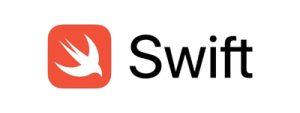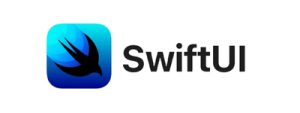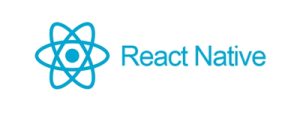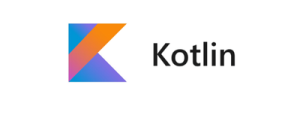
Since Objective-C was the main language for iOS back in the day, a major shift has occurred in top-notch iOS development. At present, developers have many programming languages to pick from, all with features that suit them to different kinds of projects.
If you’re either launching your first app as a start-up or aiming to grow your digital presence, carefully selecting the right language is very important for app development in Sydney.
The Magnificent Seven: Your iOS Language Options
It isn’t unexpected that Swift is still in the lead for iOS development in 2025. Swift, Apple’s special programming language, brings together top performance and features that programmers like.
1. Swift: Apple’s Golden Child

It isn’t unexpected that Swift is still in the lead for iOS development in 2025. Swift, Apple’s special programming language, brings together top performance and features that programmers like.
Key Strengths:
- Using the features native to a language
- Errors that are often made in programming are prevented by strong type safety.
- Good care is taken to manage memory
- The frameworks work together effortlessly with Apple tools.
- Concurrency is effective with the use of async/await.
Since Swift 6.0 includes better macros and improved actors, developers now have a simpler path to working with concurrent programs.
2. SwiftUI: Declarative UI Development

Since it’s technically a framework instead of a language, SwiftUI is still important to highlight because it has completely changed how apps work on iOS.
Key Strengths:
- Syntax that makes it simple to understand sentences is declarative.
- Real-time previews while instances are being created
- Accessibility features are automatically enabled for all apps.
- Smoothly working on all Apple devices
- Easily animate your UI with little code.
One top developer at a leading mobile app development company said that SwiftUI allows them to complete UI development in less than half the time for standard apps.
3. Objective-C: The Reliable Veteran

Though Objective-C is not used much in new development, it’s still alive.
Key Strengths:
- Support for a developed codebase
- A solid environment that runs the application
- Swift doesn’t have dynamic features like other languages.
- Having a legacy system environment
Firms still using legacy apps find Objective-C useful, as it helps make the integration of new features much easier.
4. React Native: Cross-Platform Champion

React Native continues to impress companies by giving them a single solution for iOS and Android.
Key Strengths:
- Web developers should feel comfortable with JavaScript.
- One file of code that can be used on different platforms
- Faster development is made possible by eliminating the need to reload the whole application.
- An outstanding collection of third-party library solutions
- Applications perform together, just like a natural smartphone should.
With the new 2024 architecture enhancements, the difference in how React Native apps run compared with native apps has become much smaller.
5. Flutter/Dart: The Rising Star

Google’s Flutter framework, written in Dart, has become very popular with developers in Australia.
Key Strengths:
- Dedicated performance that runs without issues
- Beautifully designed and customizable UI components
- Fast updates in the browser during development
- You write one source code for all platforms.
- The community is showing more support.
Because Flutter uses widgets, any UI design you create appears the same on every iOS device, making it a hit for apps that rely on visuals.
6. Kotlin Multiplatform: The Pragmatic Choice

With Kotlin Multiplatform, Android developers can now use a technology that is gaining wide recognition.
Key Strengths:
- Unify the logic behind the functions of iOS and Android.
- Use the native design frameworks that are provided by Google and Apple.
- Lang with safety and modern features
- More companies are using R in their work.
- Ability to work with the current code without difficulty
According to the Australian director of mobile development for this financial institution, using Kotlin Multiplatform allows the business to be consistent while still offering a truly native experience for every user.
7. Python (via PyBridge): The Newcomer
Many would be surprised that Python, an entry on our list, can now be used in iOS development through Apple’s PyBridge framework.
Key Strengths:
- Relies on Python libraries and the experience people have with them
- Perfect choice for machine learning and data-driven workloads
- Easy-to-use rapid prototyping tools
- Gives easy access to a wide variety of scientific computing libraries
- Easy to use for developers starting with mobile apps
Not all kinds of applications can use Python, yet its integration is ideal for data analysis or artificial intelligence systems.
Beyond Language: Other Crucial Factors
Programming language should not be the only factor for your success in iOS development—several others play a role too.
Development Timeline
When time is not on your side, it’s wise to pick a language that develops applications rapidly.
- Developers using SwiftUI and Flutter can build UIs more quickly than with other tools.
- Rapid prototyping is where React Native performs best.
- For iOS-only complex tasks, Pure Swift provides the best way to achieve them.
Budget Considerations
The cost of developing software changes considerably depending on which language is chosen.
- With React Native and Flutter, you can cut the total budget by up to 30-40%.
- Rapid development projects are usually billed at higher prices in Australia.
- As fewer experts in Objective-C remain, keeping codebases in Objective-C gets more difficult.
Long-Term Maintenance
Be sure to plan how you will maintain the project in addition to how you will build it.
- Developing with Swift provides the best chance for iOS apps to last over time.
- Cross-platform frameworks carry the potential to introduce dependency risks as they develop.
- Where developers are easy to find should be a factor in your decision.
The Australian Context
The Australian situation for development is different from elsewhere, and its distinctive aspects are important to consider.
- Sydney and Melbourne are seeking skilled Swift developers more than anywhere else.
- Many start-ups now rely on React Native.
- Many enterprise users now ask for applications built with Kotlin Multiplatform.
- Retail and hospitality companies are especially using Flutter.
🎧 Podcast: Top 7 iOS Programming Languages You Should Know in 2025

Not in the mood to scroll? Tune in instead! In this episode, we unpack the top iOS programming languages making waves in 2025—from Swift to Python—and what they mean for start-ups and businesses in Australia. Quick, clear, and jargon-free!
Conclusion: Making Your Choice
The “best” programming language for your iOS application isn’t universal – it depends entirely on your specific needs, resources, and goals. For purely iOS applications with no cross-platform requirements, Swift remains the gold standard. For businesses looking to maximize efficiency across platforms, React Native and Flutter offer compelling alternatives.
The most successful projects often begin with a thorough consultation with experienced developers who can help navigate these choices based on your specific business context and requirements.
With VT Digital, the top Mobile App Development Service Provider, your brand is set for success at every level, nationally and internationally!


